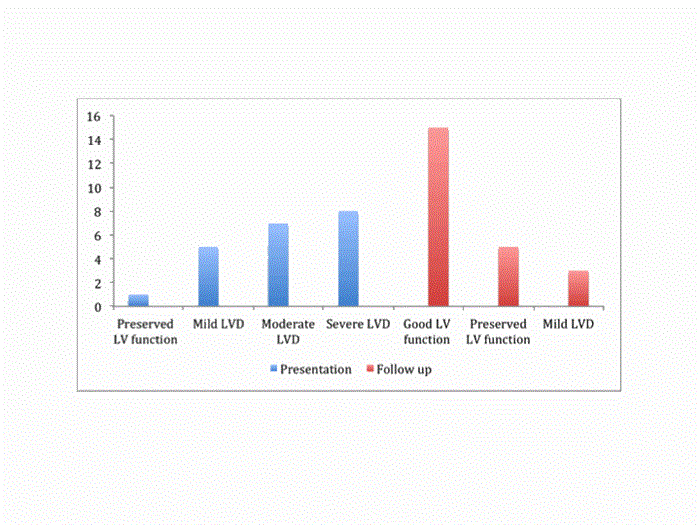Background: Takotsubo, stress-induced cardiomyopathy, is an increasingly diagnosed condition characterized by transient systolic dysfunction of the apical and/or mid segments of the left ventricle (LV), which mimics myocardial infarction (MI), but without obstructive coronary artery disease. It is much more common in women and is usually related to emotional or physical stress.
Aim: We aimed herein to review the Takotsubo patients admitted to our institution in order to better characterize patients with Takotsubo and their outcome.
Methods: We conducted a retrospective cohort study of all patients discharged with the diagnosis of Takotsubo cardiomyopathy between 1/2007 and 11/2013.
Results: A total of 23 patients were identified. All patients were admitted with a clinical presentation and electrocardiographic abnormalities resembling acute coronary syndrome (ACS). 95% of patients were women with a mean age of 66.5 + 14.2. All patients underwent coronary angiography, which did not demonstrate significant coronary artery disease. All patients had some grade of LV dysfunction (LVD) at presentation (4.3% preserved LV function, 21.7% mild LVD, 39.1% moderate LVD and 34.7% severe LVD) with regional wall motion abnormality. One patient presented with ventricular fibrillation, additional patient had cardiogenic shock and 2 patients had mural thrombus. There was no in hospital mortality. Moreover, all patients demonstrated great improvement in LV function and disappearance of regional wall motion abnormality with the majority of patients regaining preserved-good LV function (86.9%) and the minority mild LV function (13%).
Conclusions: In line with previous series the great majority of Takotsubo patients admitted to our unit were women presenting with ACS like symptoms and electrocardiographic changes. Most of them had at least moderate LVD dysfunction at presentation, however all of them regained preserved-good LV function. Long term follow up is needed in order to examine whether there are recurrences or deterioration of the LV function over time.


